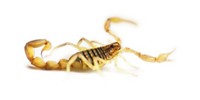Advertisement
Grab your lab coat. Let's get started
Welcome!
Welcome!
Create an account below to get 6 C&EN articles per month, receive newsletters and more - all free.
It seems this is your first time logging in online. Please enter the following information to continue.
As an ACS member you automatically get access to this site. All we need is few more details to create your reading experience.
Not you? Sign in with a different account.
Not you? Sign in with a different account.
ERROR 1
ERROR 1
ERROR 2
ERROR 2
ERROR 2
ERROR 2
ERROR 2
Password and Confirm password must match.
If you have an ACS member number, please enter it here so we can link this account to your membership. (optional)
ERROR 2
ACS values your privacy. By submitting your information, you are gaining access to C&EN and subscribing to our weekly newsletter. We use the information you provide to make your reading experience better, and we will never sell your data to third party members.
Biological Chemistry
Centipede Venom To Ease Your Pain
Researchers think that a peptide in the creepy-crawly’s venom selectively blocks a sodium ion channel linked to pain
by Bethany Halford
October 7, 2013
| A version of this story appeared in
Volume 91, Issue 40
Venomous, loaded with legs, and measuring 8 inches long—the Chinese red-headed centipede is a creepy-crawly thing most of us would steer clear of. But new research shows that a peptide in this creature’s venom could be a candidate for treating chronic pain (Proc. Natl. Acad. Sci. USA 2013, DOI: 10.1073/pnas.1306285110). Six FDA-approved drugs have been derived from proteins or peptides found in various venoms, including the analgesic Prialt (ziconotide), which is a synthetic version of a compound found in the cone snail. The Chinese red-headed centipede, or Scolopendra subspinipes mutilans, is now getting into the painkilling game. A team led by Mingqiang Rong and Ren Lai of China’s Kunming Institute of Zoology and Glenn F. King of Australia’s University of Queensland isolated a 46-residue peptide from the critter’s venom. They report that the peptide proved to be a better analgesic than morphine in mouse studies and did not have any apparent side effects. The peptide’s sequence is unlike any previously described protein or peptide, the researchers report. They believe the compound selectively inhibits a specific voltage-gated sodium channel that’s been linked to pain.





Join the conversation
Contact the reporter
Submit a Letter to the Editor for publication
Engage with us on Twitter